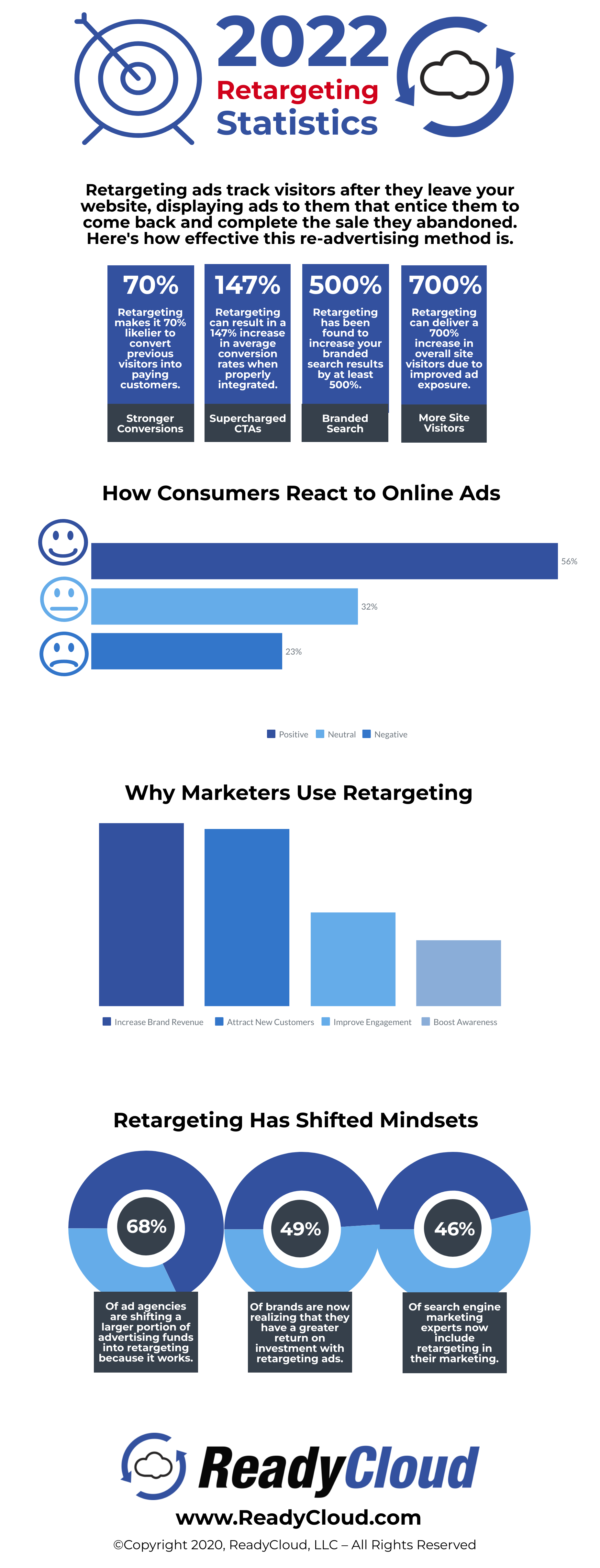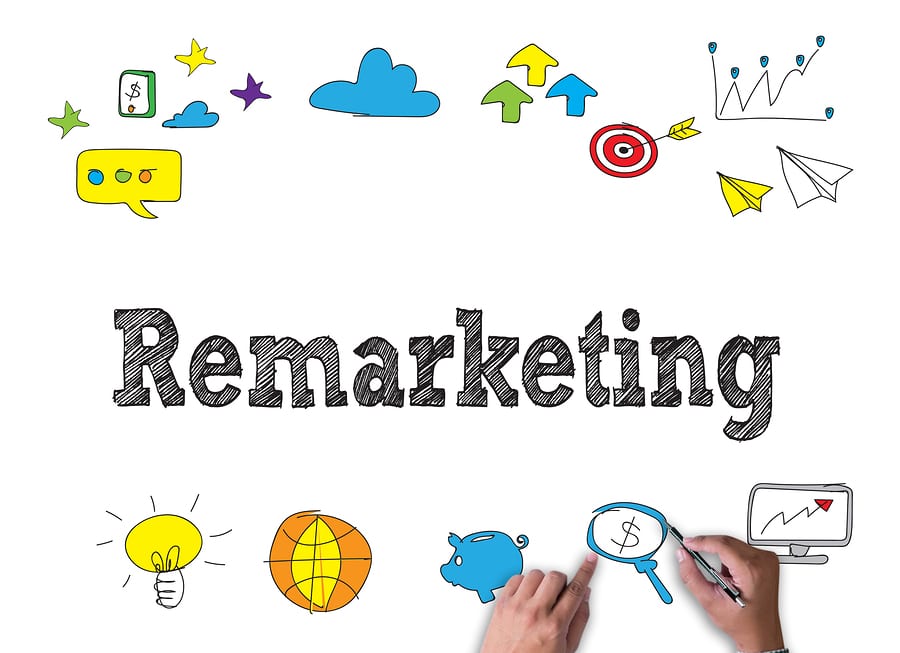Did you know it’s easier to sell again to your existing customers than to entice first-time buyers and new leads to check out your products and services? The probability of selling to an existing customer is a whopping 60–70% compared to a new prospect or lead.
This explains why so many companies focus on remarketing strategies, namely because current retargeting statistics paint the full picture. Simply put, these strategies are designed to attract your existing pool of leads into doing business with you. These could be people who have engaged with your brand or have already purchased goods from you.
Take a closer look at remarketing and how it could help your ecommerce business win back clients and make more sales.
How to Use Ecommerce Remarketing
While the idea of remarketing seems pretty straightforward, things tend to get a little more complex when it comes to implementing it in real life. Your remarketing objectives can differ for customers who behave differently before, during, and after they use your app or website.
Take a look at this chart below to better understand how remarketing works.

Now that you better understand the concept, how effective is it? Take a look at this list of statistics on ecommerce retargeting we’ve compiled to get a better idea how retargeting works in 2022.
➡️ Customers who see retargeted ads are 70% more likely to convert on your website. Sometimes it takes more than one impression to drive a sale. Retargeting ads are essential for moving on-the-fence customers through the funnel.
➡️ The average CTR for retargeted ads is 10x that of display ads. While display ads earn about 0.07% CTR, retargeted ads come out at about 0.7%.
➡️ While 72% of customers abandon carts, only 8% of customers who are not retargeted come back to convert. Retargeting has the potential to convert shoppers who abandoned their carts. It can also be a great way to make that sale, after all. When you retarget ads to these customers, the conversion rate goes up to 26%.
➡️ 46% of marketing professionals believe retargeting is one of the most overlooked online marketing methods. Get the upper hand on your competition by taking advantage of this underused methodology.
➡️ 9% of brands allocate a separate budget for retargeting efforts. This demonstrates the importance of retargeting and can give your company a model to follow.
➡️ 33% of customers retarget for the sake of increasing revenue. Meanwhile, 33% do it to earn new customers, 16% do it to improve site engagement, and 12% do it to boost brand awareness.
➡️ 3 out of 5 U.S. buyers notice ads for products they viewed on other sites. This exposure can be essential for your sales.
➡️ 30% of consumers have a “positive” or “very positive” reaction to retargeted ads. Only 11% of customers feel negative about them. 59%, meanwhile, have a neutral response.
➡️ Online consumers are open to behaviorally retargeted ads. What’s more, 25% of consumers enjoy them because they remind them of products they’ve viewed previously.
➡️ Email retargeting CTRs are 3-5% higher with upsells. This is compared to standard site targeting.
➡️ Retargeted customers have a 70% likelihood of converting when they return to your website.
➡️ Retargeting ads have a 100% higher return rate than display or text ads, with display ads earning an average 0.07% CTR and retargeting ads earning a healthier 0.7% CTR.
➡️ Retargeted ads earn up to a 27% reconversion rate on shoppers who’ve abandoned the cart.
➡️ Two-thirds of shoppers pay attention to a retargeting ad after they’ve bounced away from an ecommerce website.
➡️ Nearly 30% of consumers see retargeting ads in a positive light, with 59% having a neutral response to them.
➡️ 25% of consumers like retargeting ads because they remind them of products and services they want but may not be ready to use just yet.
➡️ Email retargeting has a healthy click-through ratio of 3%-5%.
➡️ 50% of major brands have specially allocated budgets in place just for retargeting spend.
➡️ 90% of digital marketers see a higher yield and a stronger ROI on spend from retargeting, as compared to other digital ad spends and yields.
➡️ Retargeting ads yield a 76% increase in clicks over any other type of digital ad.
➡️ Retargeting ads have up to a 1046% increase in branded search, namely due to the impressions they create that don’t cost a penny to the marketer.
➡️ 54% of marketers focus their retargeting ads on social media over any other vertical.
➡️ Google remarketing campaigns have historically yielded a whopping 161% reconversion rate.
➡️ Almost 97% of website visitors are not sold on the first visit, which is the primary reason why retargeting is so effective.
➡️ Google’s retargeting service reaches 90% of all web users worldwide.
➡️ Mobile conversions improve by as much as 51% when retargeting is in place.
➡️ 27% of online retailers swear by retargeting as a critical part of their digital marketing plan.
Recover Abandoned Carts
Cart abandonment is a typical occurrence in the ecommerce industry and is attributed to more than $4 trillion in lost sales every year. Many shoppers add items to their baskets but decide not to complete the transaction. One of the best strategies to combat the issue of cart abandonment is by sending a cart abandonment email to customers who have bounced away without closing the deal.
Don’t always assume that customers leave their carts because they’re not interested in your items. Cart abandonment could happen for a host of reasons, as we’ve outlined in these 50 statistics on cart abandonment. For example, the potential client’s laptops might shut down due to a technical issue. In this instance, you might say farewell by sending the customer a follow-up email reminding them that their items are waiting to be bought! Be sure to add a CTA button redirecting them to their cart.
Cross-Sell & Upsell
Try making a sale right after a purchase has been made. This is when your customers trust your brand and are happy because they’ve just had some retail therapy.
Chances are that they will be more receptive to your product recommendations. Any opportunity to reconnect with a customer is an excellent chance to cross-sell and upsell.
You can use this opportunity to make more direct and even affiliate sales. For instance, sports goods stores can offer discount codes on running shoes for people who recently bought tracksuits. Furthermore, if you create and run affiliate marketing campaigns, you could track affiliate conversions in Google Ads.
Reengage with Site Visitors
The right retargeting and remarketing strategies allow you to reach out to clients who have already interacted with your brand. These are the best pool of audience for your business as they have already interacted with your organization and are automatically more inclined to work with and trust your business.
You can promote new products, update them on discounts and keep them updated in general on new business activities.
Diversifiable Approach
Most businesses focus their remarketing efforts on a particular medium, such as Facebook advertisements, banner ads, display ads, or video ads. Despite this, customers aren’t confined to a single distribution channel.
At the onset of your marketing campaign, put yourself in front of potential clients in environments where they spend their time. This involves making your campaigns available across various platforms, including but not limited to mobile devices.
A/B Testing
Even if you believe that you have put together an excellent combination of text, graphics, and a call-to-action (CTA) for your retargeting campaign, there is no guarantee that it will be successful. If you want to improve the number of people that click on your website, you need to try out various combinations until you find one that is successful.
This method is referred to as A/B testing. The technique involves making little adjustments one at a time and comparing the results to the advertisement that is already in circulation. If you do this, you will be able to identify aspects that need to be adjusted.
Segmentation & Targeting
It is not reasonable to infer that they are also interested in a corner couch simply because they have shown interest in the wall lighting. People who have already shown interest in what you are selling will appreciate it if you offer detailed info about the product or service.
Narrow down the list of potential customers to a smaller number by using customer segmentation to determine which customers are the most likely to purchase a particular product or service. When it comes to remarketing, you will have the most success if you categorize your customers according to their urgent needs and desires and then try to serve those needs and wants. Glean some more tips from this guide on Growth Marketing statistics we’ve compiled to gain the upper hand.
Page Specific Retargeting
First things first, before you start remarketing any of your services or products, think about which web pages you want to tag. Marketing campaigns are built around a specific collection of pages, and those pages should be linked to those goals.

If you want to make more sales, you might tag the pages of your best-selling individual products or even your best-selling categories and then remarket those pages to people who have left your site without purchasing anything. If they see the advertisements again, they may rethink their decision and return to buy something.
In a related vein, you might tag pages that provide them with information about your business and the products you sell, highlighting the advantages of doing so to reclaim any leads you may have lost and strengthen your brand’s reputation. That way, when they make a purchase, they’ll be more likely to choose a more expensive item and stick with you.
Reduce Overall Ad Spend
It would be best to cut the budget for advertisements to retarget visitors who left your homepage or other pages on your website that are not focused on sales.
Visitors who navigate these pages but then leave without making a purchase do not contribute as much value to your business as visitors who left your shopping cart pages without making a purchase.
Despite this, you should not give up on remarketing them to your existing customers. Simply put, you will need to devote a more significant amount of your time to nurturing those prospects and directing them to pages on your website that provide additional information.
Need Even More Tips?
Need More Tips?
We’ve got you covered. Take a look at our related guide, Remarketing Statistics for 2022, to glean even more relevant facts and tips. Next, have a look at the infographic we’ve created below on retargeting for ecommerce











